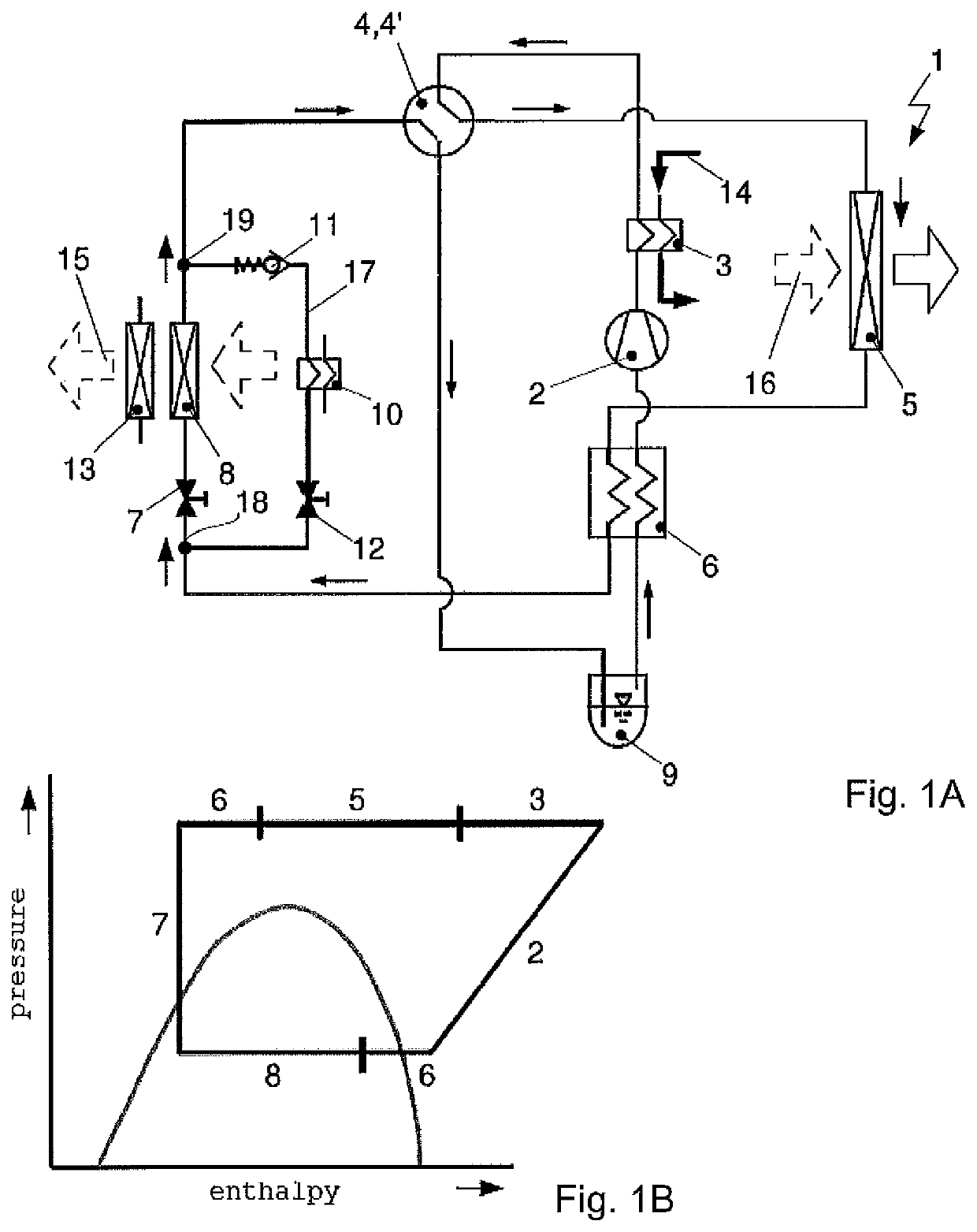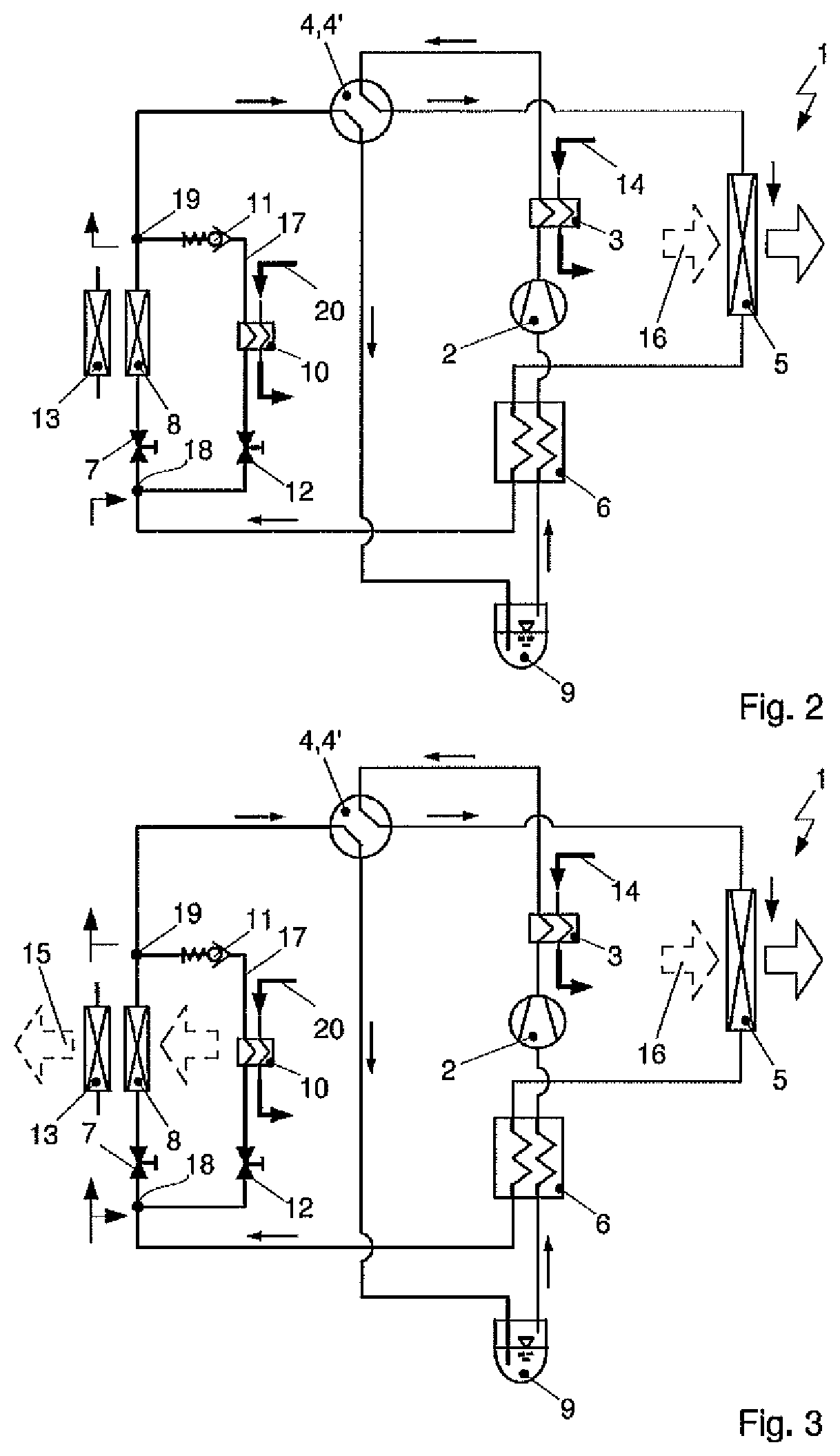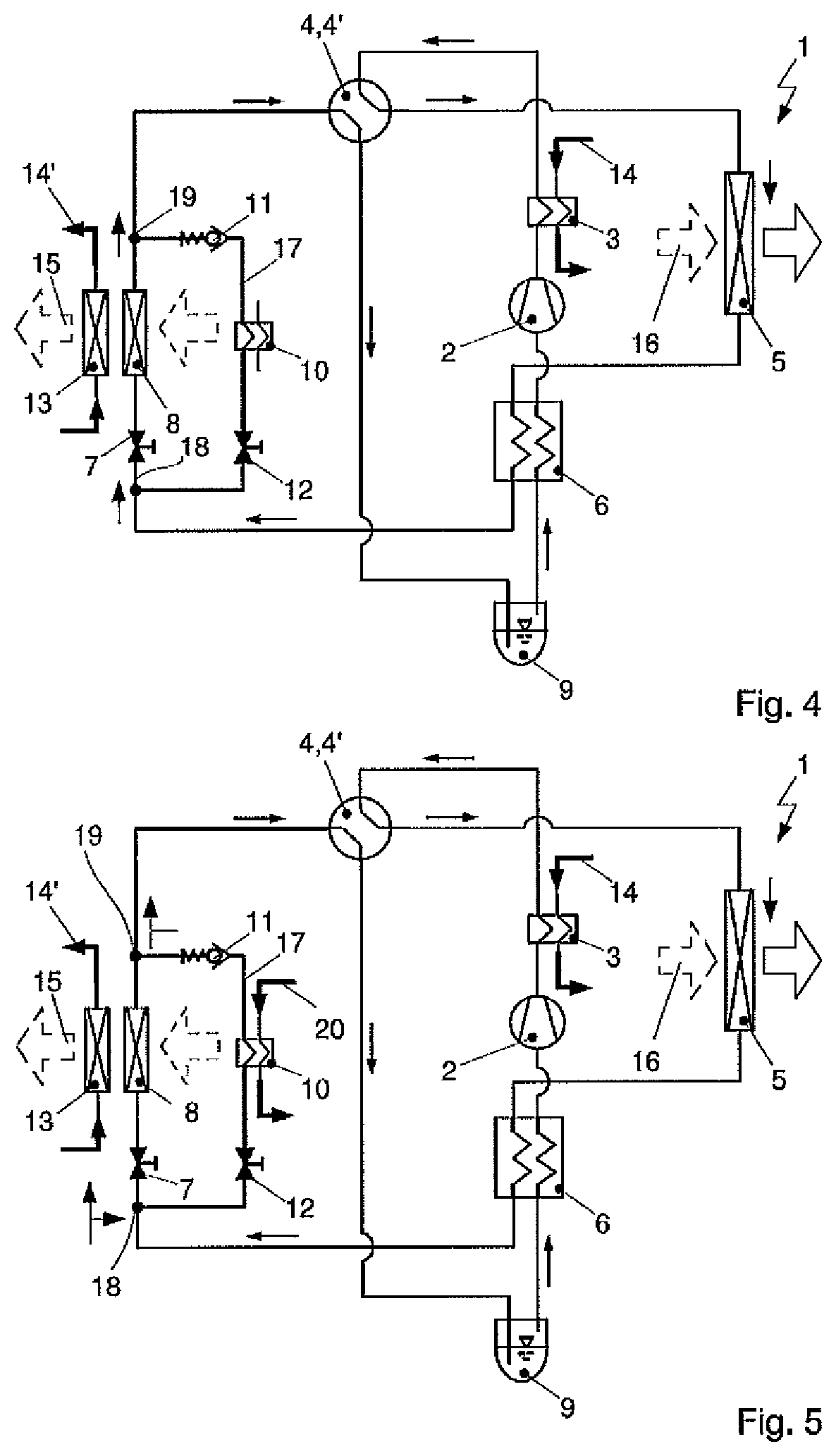Air-conditioning system of a motor vehicle and method for operating the air-conditioning system
a motor vehicle and air-conditioning technology, applied in refrigeration components, light and heating equipment, transportation and packaging, etc., can solve the problems of not being able to achieve the required temperature level, affecting the cooling effect of the vehicle, and not being able to achieve a sufficiently high coolant temperature, etc., to achieve the effect of reducing production and maintenance costs, reducing heat loss, and reducing complexity
- Summary
- Abstract
- Description
- Claims
- Application Information
AI Technical Summary
Benefits of technology
Problems solved by technology
Method used
Image
Examples
Embodiment Construction
The following detailed description and appended drawings describe and illustrate various exemplary embodiments of the invention. The description and drawings serve to enable one skilled in the art to make and use the invention, and are not intended to limit the scope of the invention in any manner.
FIG. 1A shows an air conditioning system 1 with a refrigerant circuit during operation in a refrigerator mode. FIG. 1B shows a pressure / enthalpy diagram pertaining to the operation of the refrigerant circuit in the refrigerator mode. The changes in state upon flowing through the individual components of the refrigerant circuit are indicated with the reference numbers of the components.
The refrigerant circuit has a compressor 2 for compressing a refrigerant taken in, a refrigerant-coolant heat exchanger 3, also known as a coolant-cooled heat exchanger, for desuperheating the refrigerant, as well as a valve arrangement 4, 4′ for switching the refrigerant circuit between different operating m...
PUM
 Login to View More
Login to View More Abstract
Description
Claims
Application Information
 Login to View More
Login to View More - R&D
- Intellectual Property
- Life Sciences
- Materials
- Tech Scout
- Unparalleled Data Quality
- Higher Quality Content
- 60% Fewer Hallucinations
Browse by: Latest US Patents, China's latest patents, Technical Efficacy Thesaurus, Application Domain, Technology Topic, Popular Technical Reports.
© 2025 PatSnap. All rights reserved.Legal|Privacy policy|Modern Slavery Act Transparency Statement|Sitemap|About US| Contact US: help@patsnap.com



